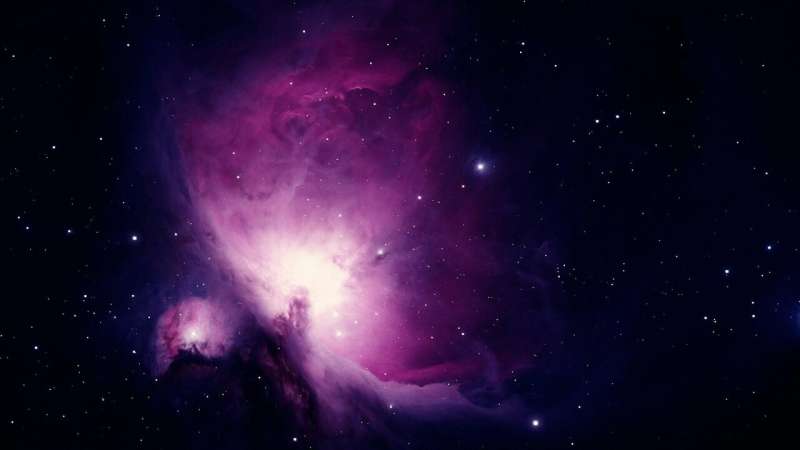Existence of uneven circumstellar matter found based on TESS data

Researchers from the Yunnan Observatories of the Chinese Academy of Sciences have discovered unusual variations in the consecutive Transiting Exoplanet Survey Satellite (TESS) light curves of the supersoft X-ray source V Sge. This is the first evidence to reveal that there may be uneven circumstellar matter surrounding the supersoft X-ray source.
This work was published in Monthly Notices of the Royal Astronomical Society on Feb. 2.
V Sge is a unique eclipsing cataclysmic binary and a recognized supersoft X-ray source, consisting of a compact white dwarf primary component and a main-sequence star companion. The white dwarf continuously accretes mass from the companion through the accretion disk.
To further study their mass exchange and the resulting orbital evolution, the researchers monitored them using the one-meter telescope at Yunnan Observatories and then obtained their minimum timings of the eclipse.
Combining with the more continuous TESS light curve, the researchers analyzed the orbital period variation of V Sge in detail. The result implied that the orbital period is decreasing continuously, indicating that the more massive companion is transferring material to the white dwarf during its evolution on the thermal timescale, as well as the possible mass loss from the accretion disk takes away the angular momentum of this system.
Based on the result of the orbital period analysis, researchers derived the latest rate of orbital period change for this system, and then, in the case of the consequential angular momentum loss (CAML) caused by the accretion disk wind, they estimated the range of mass transfer rate and mass accretion rate. Moreover, it can be roughly estimated that V Sge might reach to Chandrasekhar limit in at least 1Myr, then might explode as a type Ia supernova.
In addition, the researchers found evidence of the existence of uneven circumstellar matter surrounding the supersoft X-ray source. They discovered that there are peculiar and irregular changes in the more continuous TESS light curve of V Sge, which may be caused by the extinction effect of the uneven circumstellar matter and dynamic changes of the shape of the accretion disk edge.
These variations provide researchers with an opportunity to understand the mass transfer and mass ejection process better. However, the law of these variations and the mechanism resulting in those need to be further confirmed yet.
Researchers obtain special photometric behaviors of novae-like system and confirm evidence of disk wind
Lei Zang et al, Photometric study of the supersoft X-ray source V Sge based on TESS data, Monthly Notices of the Royal Astronomical Society (2022). DOI: 10.1093/mnras/stac047
Citation:
Existence of uneven circumstellar matter found based on TESS data (2022, February 15)
retrieved 15 February 2022
from https://phys.org/news/2022-02-uneven-circumstellar-based-tess.html
This document is subject to copyright. Apart from any fair dealing for the purpose of private study or research, no
part may be reproduced without the written permission. The content is provided for information purposes only.
For all the latest Science News Click Here
For the latest news and updates, follow us on Google News.

